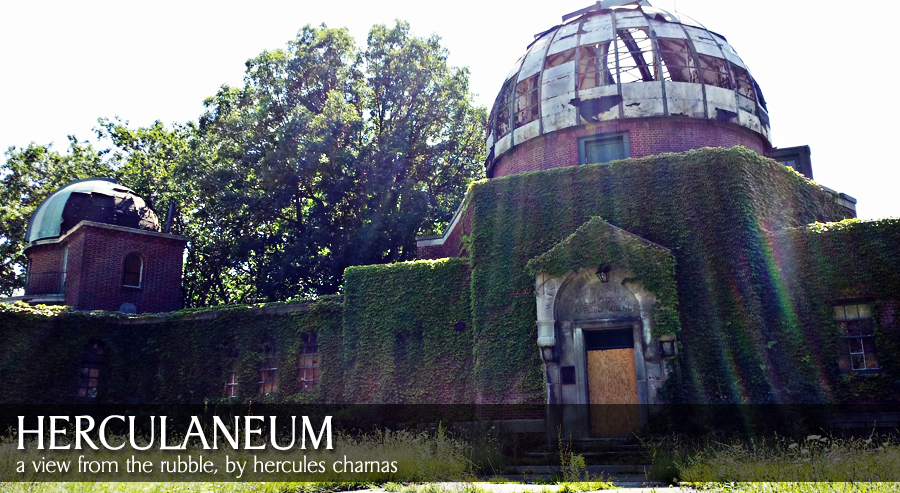Día de los Muertos
When I was first introduced to "Dia de los Muertos", the Mexican Day of the Dead Celebration, by Will, being still kind of a gringo from Ohio, I really wasn't sure what to make of it.
At St. Pius Catholic Church in Warren, Ohio, they had tainted the water with the thoughts that we should be afraid of skulls and skeletons, even though the last time I checked, I'm pretty sure we all have them tucked behind our facades. And if I'm not mistaken, they're actually what's holding us up, no?
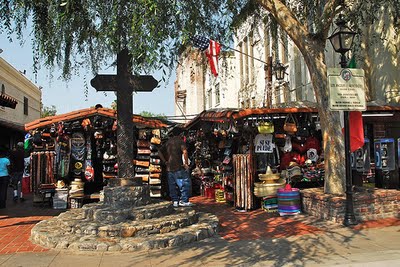
Will and his Mom took me by train from Santa Barbara down to Olvera Street in Los Angeles and I fell in love with the whole thing. I. LOVED. IT. It wasn't morbid to me in the least, but rather very real and spiritually palpable.
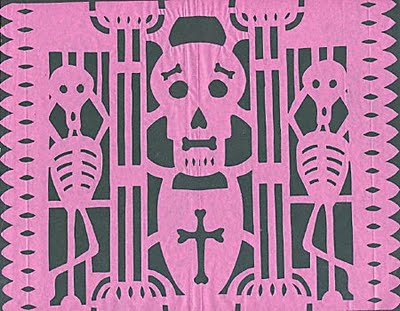
Papel Picado Decorations: part of the Mexican Day of the Dead tradition (Do-It-Yourself) (source)
"It's not about celebrating 'Death', but celebrating LIFE."
And a bottle of Tequila brought once a year to your grave site wouldn't be so bad, would it?
Although... Now that I think of it, the last time I drank a bottle of Tequila and smoked a cigar, I tore up all the bathroom carpeting in my parent's home, barfed, came to, then wondered who tore up all the carpet and puked all over the place.
My girlfriend at the time was sitting on the side of the bathtub watching the destruction take place and when I "came to" and asked, "Who the fuck tore up all the carpet and barfed all over the place?"
She just looked at me and replied, "YOU did, you dickhead."
And so it seems, I did...
So, yeah. I'm not certain the Tequila at my grave site would be such a great idea...
But I suppose, that if I were just a skeleton, I wouldn't actually have a stomach, so thus, nothing to barf up. But, I'd still have phalanges, so in theory, I could still rip up the lining of my casket, right? But... If I were dead, would I care?
Would somebody slap me, please?
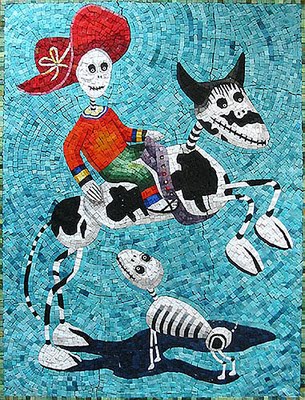
Day of the Dead mosaic by British artist Martin Cheek (source)
More than 500 years ago, when the Spanish Conquistadors landed in what is now Mexico, they encountered natives practicing a ritual that seemed to mock death.
It was a ritual the indigenous people had been practicing at least 3,000 years. A ritual the Spaniards would try unsuccessfully to eradicate.
A ritual known today as Día de los Muertos, or Day of the Dead.

The ritual is celebrated in Mexico and certain parts of the United States.
Although the ritual has since been merged with Catholic theology, it still maintains the basic principles of the Aztec ritual, such as the use of skulls.
Today, people don wooden skull masks called calacas and dance in honor of their deceased relatives. The wooden skulls are also placed on altars that are dedicated to the dead.
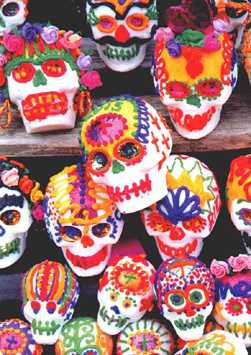
Sugar skulls, made with the names of the dead person on the forehead, are eaten by a relative or friend, according to Mary J. Adrade, who has written three books on the ritual.
The Aztecs and other Meso-American civilizations kept skulls as trophies and displayed them during the ritual. The skulls were used to symbolize death and rebirth.
The skulls were used to honor the dead, whom the Aztecs and other Meso-American civilizations believed came back to visit during the monthlong ritual.

Arbol de la Vida (source)
Unlike the Spaniards, who viewed death as the end of life, the natives viewed it as the continuation of life. Instead of fearing death, they embraced it. To them, life was a dream and only in death did they become truly awake.
"The pre-Hispanic people honored duality as being dynamic," said Christina Gonzalez, senior lecturer on Hispanic issues at Arizona State University. "They didn't separate death from pain, wealth from poverty like they did in Western cultures."
However, the Spaniards considered the ritual to be sacrilegious. They perceived the indigenous people to be barbaric and pagan.
In their attempts to convert them to Catholicism, the Spaniards tried to kill the ritual.

Artist: Patrick Murillo (source)
But like the old Aztec spirits, the ritual refused to die.
To make the ritual more Christian, the Spaniards moved it so it coincided with All Saints' Day and All Souls' Day (Nov. 1 and 2), which is when it is celebrated today. (read more)

UNA COPA MAS by Robert Pace Kidd (source)
So, let us celebrate continuation and eternal life... the best for last...
********************************
